All products featured are independently chosen by us. However, SoundGuys may receive a commission on orders placed through its retail links. See our ethics statement.
JBL Charge 5 vs JBL Flip 6
March 27, 2025
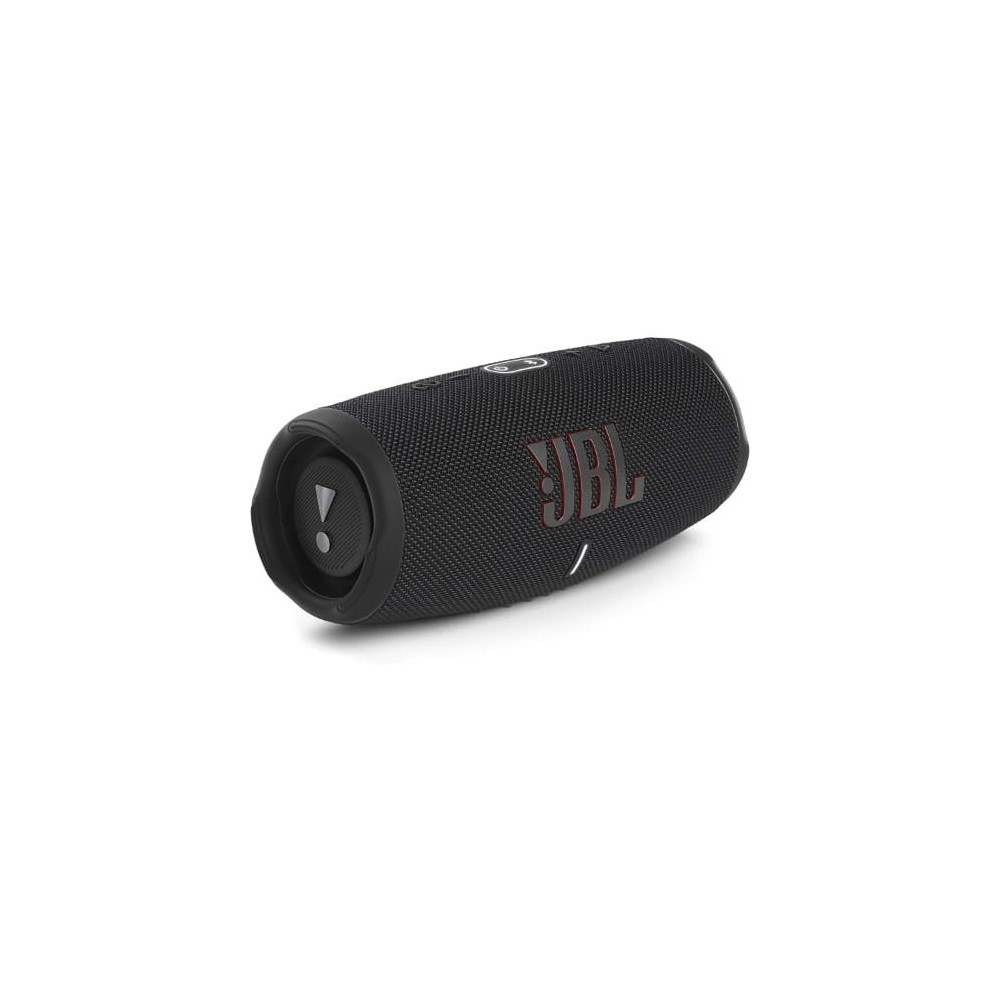


Like most Bluetooth audio experiences, you don’t usually get to try speakers in the contexts where you’d want them before you buy, so our team did. We took the JBL Charge 5 and JBL Flip 6 through their paces to see where these two Bluetooth speakers shine and what differentiates them. Sure, they came out in 2021, so it’s worth asking if they hold up now.
What’s it like to use the JBL Charge 5 compared to the JBL Flip 6?
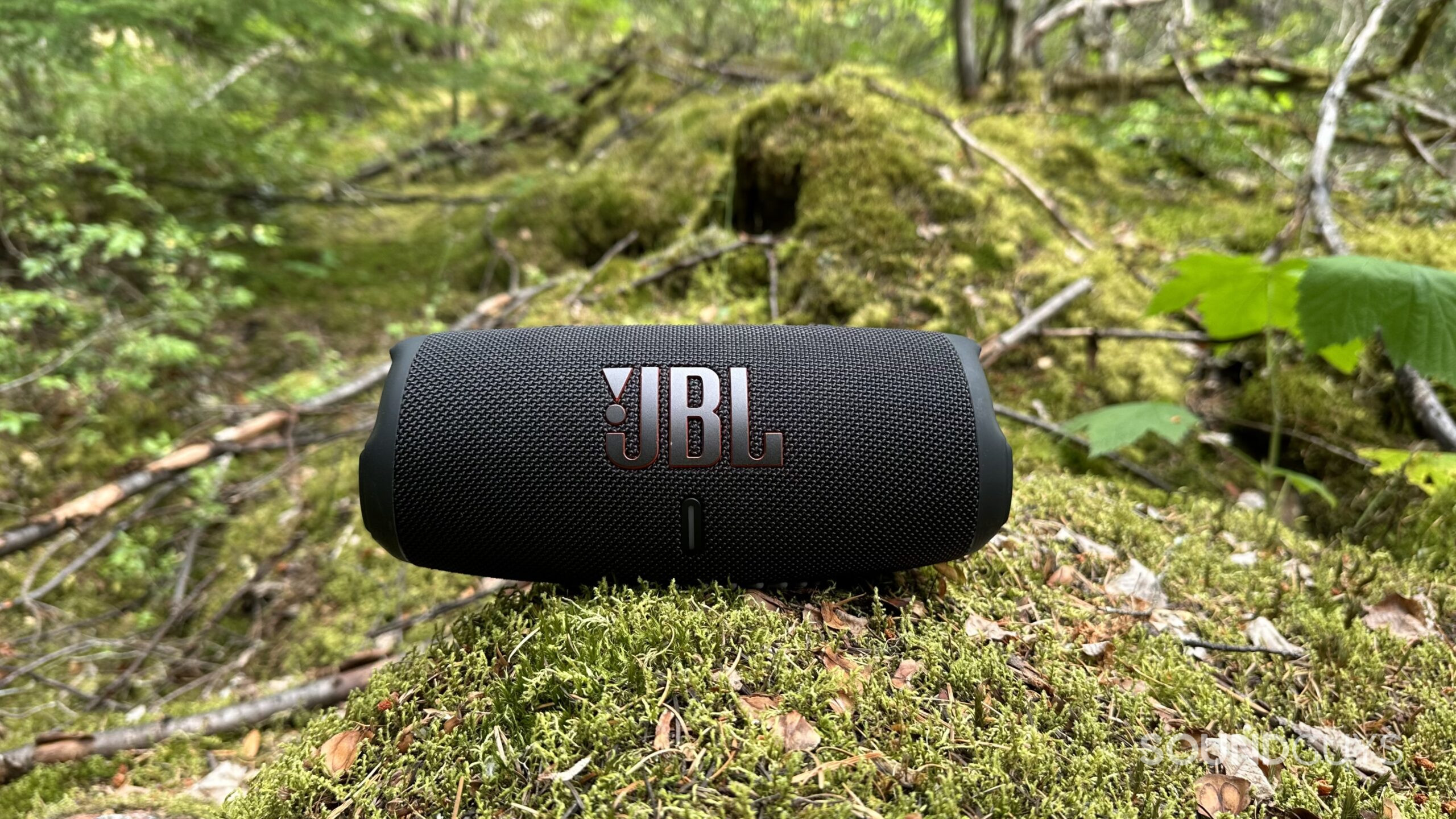
The Charge 5 weighs 960g and measures 223 x 96 x 94 mm. Featuring an IP67 rating, you can comfortably take the portable, vaguely football-shaped speaker to the beach, where it projects quite a lot of volume relative to its dimensions. Along the top, the Charge 5 has prominent command buttons (although you have to press Play twice to skip forward) and oversized branding on the front. Silicone caps off the ends and runs along the bottom to provide added durability. In our testing, a dunk in the water made no difference to the speaker’s functionality.
Both the JBL Charge 5 and Flip 6 are pretty straightforward speakers. You don’t get a mic for phone calls or a line-in port. They don’t float. Neither speaker has smart capabilities beyond that which your device can facilitate. They do not have fast charging, and they don’t have additional tech to tune the speakers according to your location. In these respects, both speakers are quite basic. You are buying the volume, tuning, battery life, and connectivity with both.
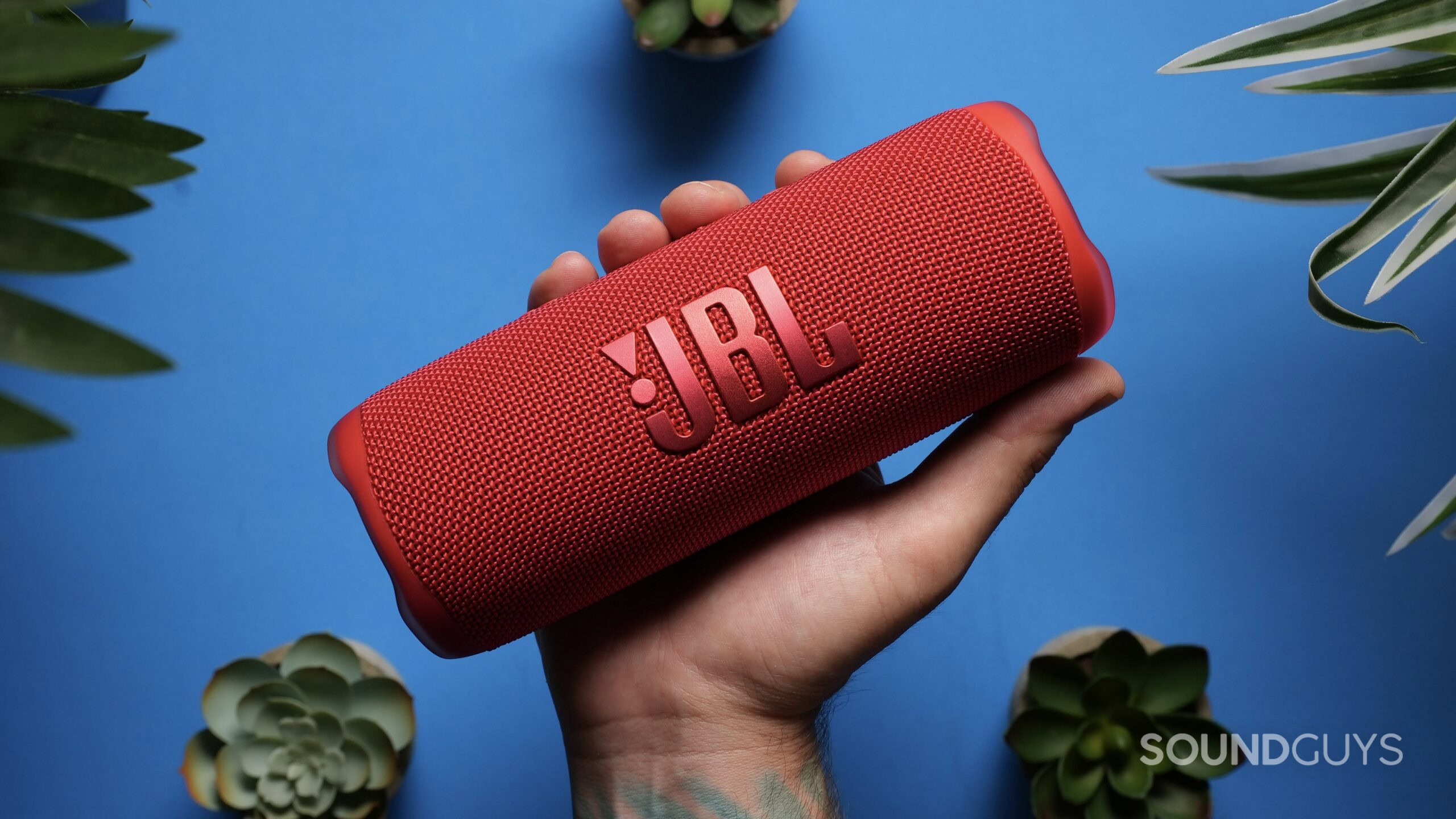
If you’re just looking at photos online, it can be hard to clock that the JBL Charge 5 is notably larger than the Flip 6. Weighing in at 544g and measuring 178 x 68 x 72 mm, the Flip 6 is overall smaller and, therefore, more portable than the Charge 5. It comes with the same IP67 rating against dust and water that the Charge 5 has. Rather than silicone on the Charge 5, the ends are made of sturdy plastic on the Flip 6. You get the addition of a loop for easy carrying. If you like to travel light, the Flip 6 has that as its main advantage in a Bluetooth speaker.
How do you control the JBL Charge 5 and JBL Flip 6?
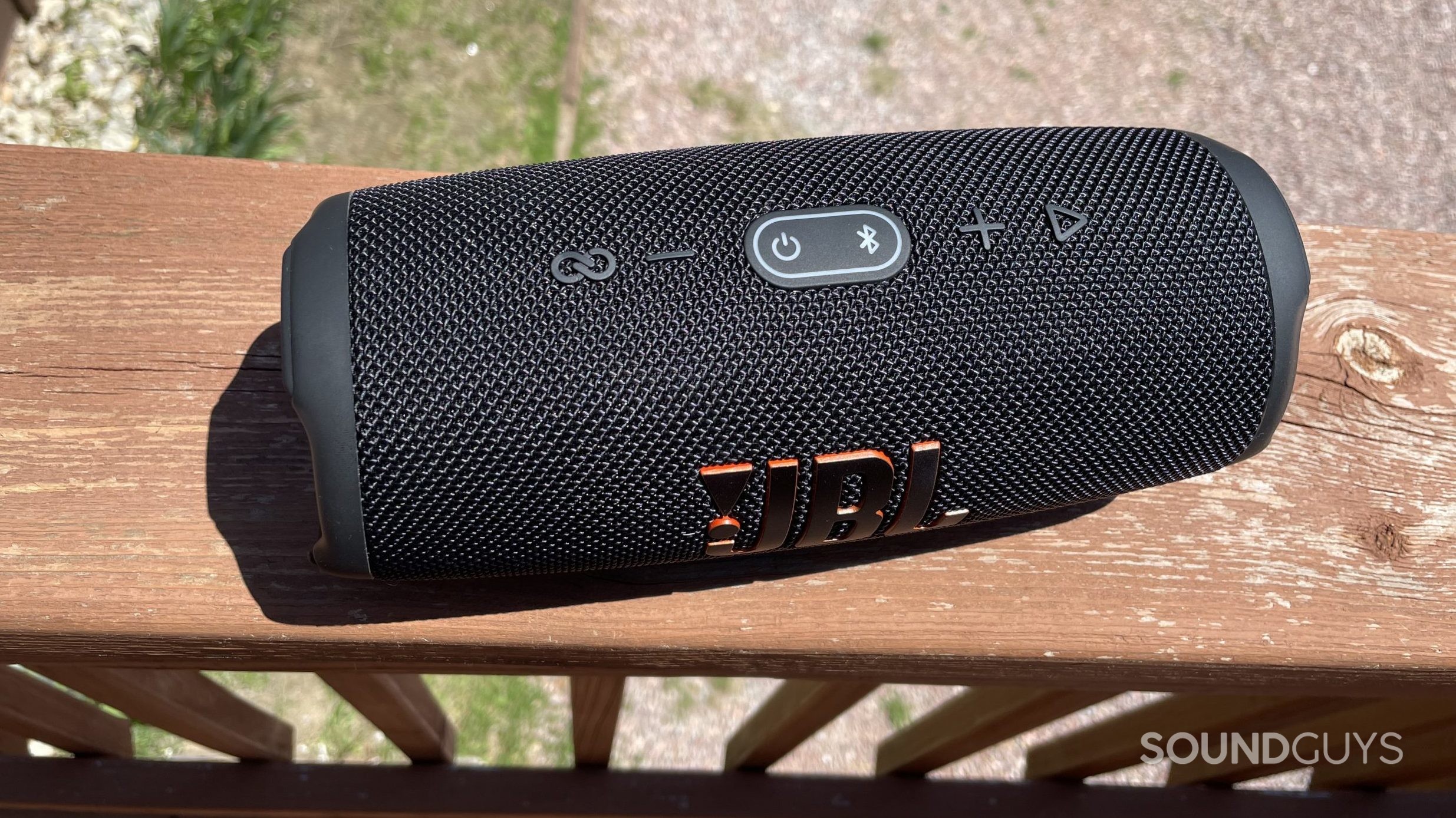
Keep in mind that neither the Charge 5 nor Flip 6 are smart speakers. So virtually all control relies on the physical buttons present on the speakers or by using your device and apps.
Should you use the apps of either JBL Charge 5 or JBL Flip 6?
In most cases, you’ll want the JBL Portable app. The app works for the Charge 5 and Flip 6. Within the app, you have access to a basic equalizer, updates, and PartyBoost mode. If you have more than one compatible speaker you can use the app to connect them in stereo or a party mode. Party mode constitutes more than one speaker playing audio in mono. This mode is good for a large space that needs the same audio, but it does not replace a conventional surround sound setup.
How do the JBL Charge 5 and JBL Flip 6 connect?
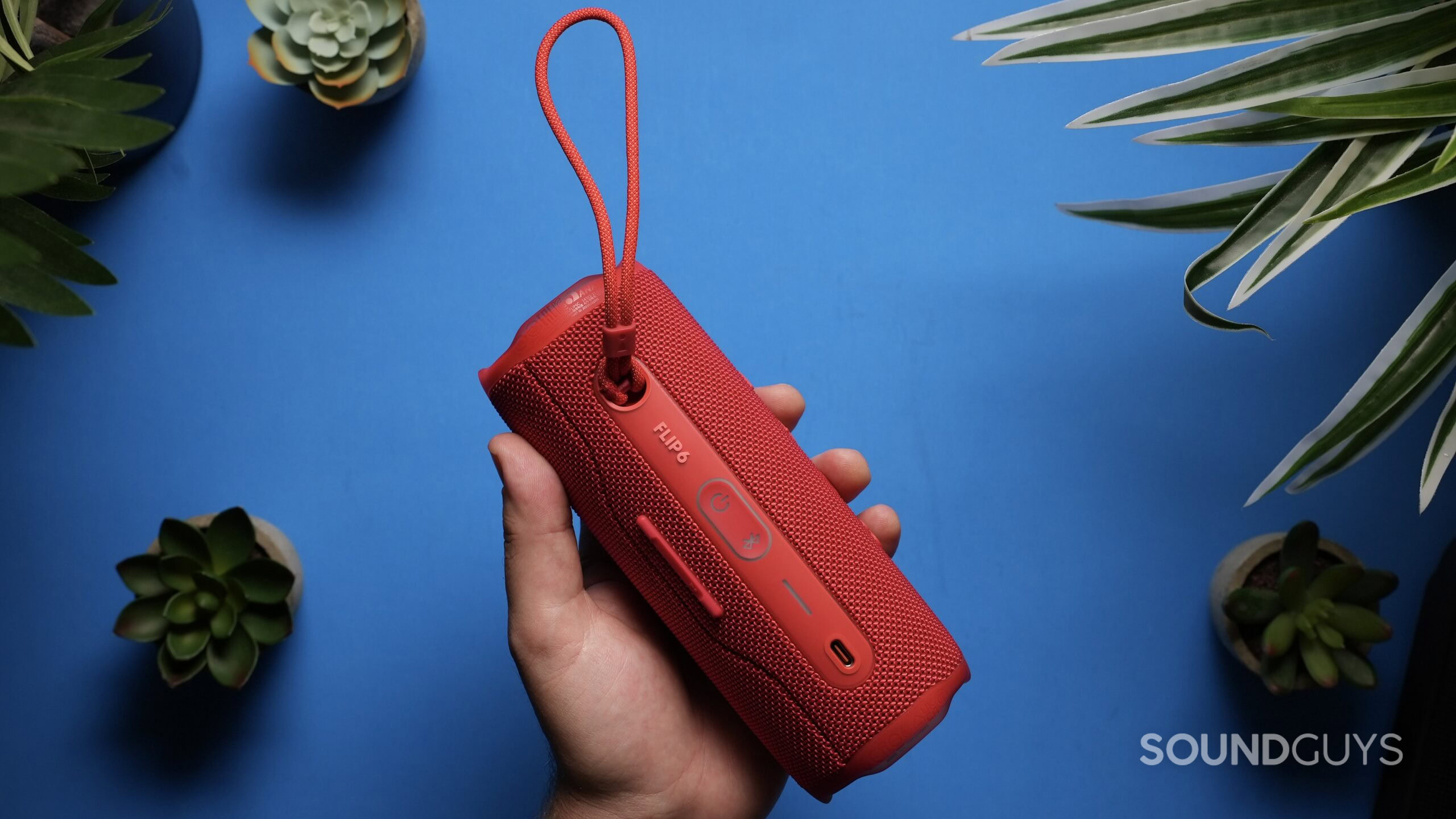
Both the JBL Charge 5 and Flip 6 are Bluetooth-only affairs, using 5.1. Both use the standard AAC and SBC codecs with no auxiliary line input or USB input. If high quality codecs are important to you, and you own an Android device, these aren’t the speakers for you. Apple users, however, get the most out of AAC codecs. In any case, you’re not exactly dealing with pristine audio when using a mono Bluetooth speaker in uncontrolled outdoor settings, so codecs matter less in this scenario than with noise-cancelling headphones, for example.
More importantly, the Charge 5 and Flip 6 exhibited no connection mishaps in our testing, so you can get the party going and keep it going. Speaking of parties, if you have a second compatible speaker (usually the same speaker from the same generation), you can use PartyBoost to create a stereo experience. Considering that the Charge 5 costs more than the Flip 6, you might think about getting two Flip 6 speakers for stereo. They will take up more space than the Charge 5, but two Flip 6 speakers weigh only 128g more in total than one Charge 5.
Is battery life better on the JBL Charge 5 or JBL Flip 6?
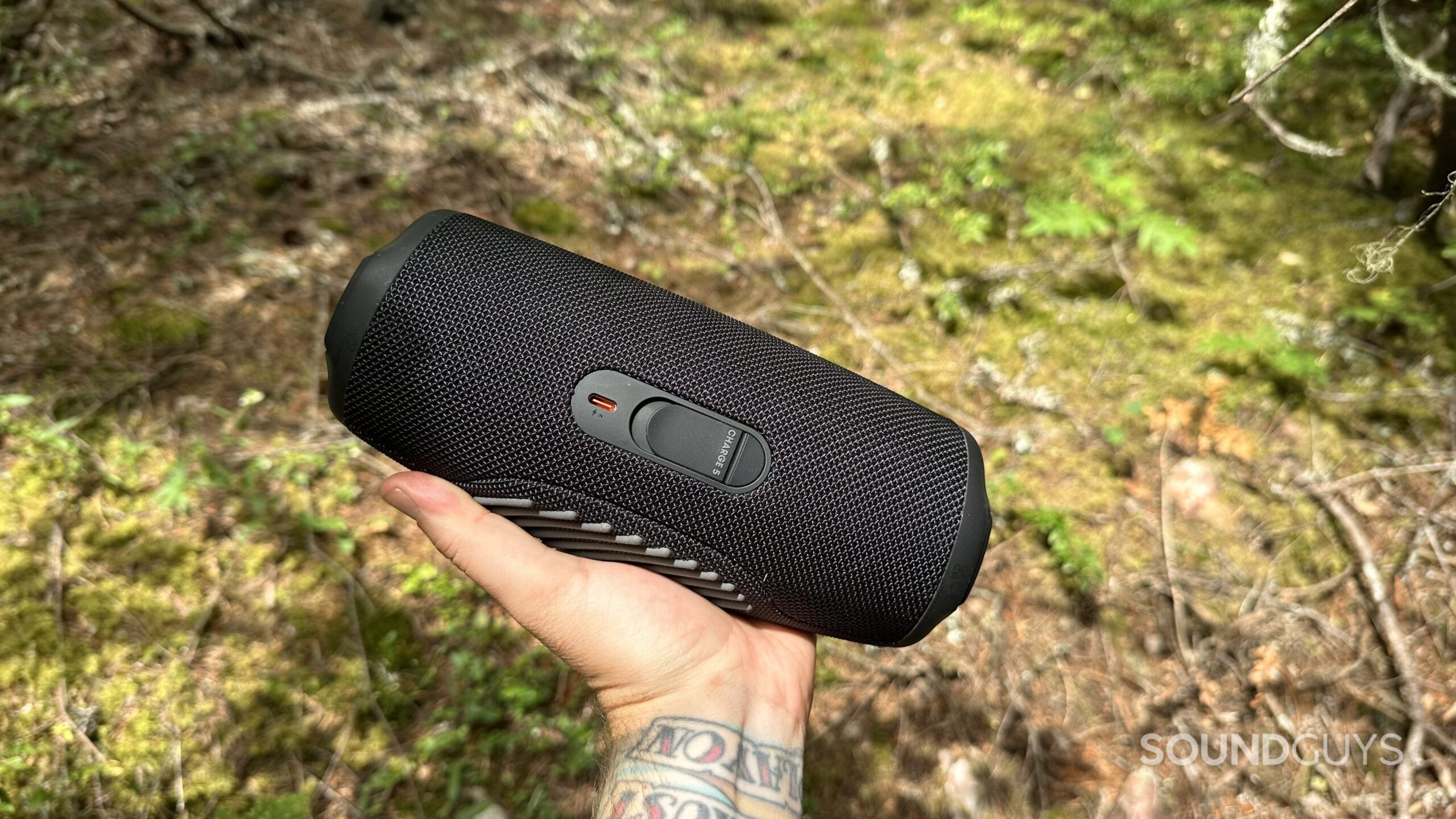
One of the niceties of the Charge 5 is that you can use the USB-A port to charge your other devices. This is especially useful given that streaming audio for hours can drain your phone’s battery life. JBL rates the Charge 5 battery as lasting 20 hours, and because the battery is literally smaller on the Flip 6, JBL rates the battery at 12 hours. In our testing, the Flip 6 reached 9 hours and 25 minutes, playing back audio at 75dB/SPL maximum. We’ve not yet tested the Charge 5’s battery life, but you can expect it’ll outlast the Flip 6.
Each speaker utilizes the modern USB-C standard for recharging the speakers. Neither speaker comes with a fast charge, which is annoying if you catch yourself with a dead speaker right before leaving the house. The Charge 5 takes 4 hours to fully recharge from empty, and the Flip 6 takes 2.5 hours to do the same.
Does the JBL Charge 5 sound better than the JBL Flip 6?

Both the Charge 5 and Flip 6 use an unconventionally oblong-shaped driver, with a separate tweeter to handle high frequencies, and two passive sub radiators for bass, only the Charge 5 is scaled up. You’re going to get a tiny bit more of a bass response out of the Charge 5. While the Charge 5 is rated at 40 watts and the Flip 6 is rated at 30 watts, this does not directly map over to indicate how loud each speaker can get because wattage refers to efficiency rather than decibels, which measures loudness. However, given the similar engineering, you can make the informed assumption that the Charge 5 gets louder than the Flip 6.
In typical JBL fashion, both speakers possess consumer-friendly frequency response tunings, which you can adjust slightly using the JBL Portable app. If you’re only buying one speaker, the Charge 5 sounds a bit better than the Flip 6, according to our reviews. Keep in mind that these are mono speakers.
Should you get the JBL Charge 5 or JBL Flip 6?
If you have the means and the space, you should get the JBL Charge 5, owing to its better battery life and larger driver. For those that prioritize portability above all other measures, the JBL Flip 6 measures smaller. They’re both great picks for essentially the same tasks, and it’s a matter of deciding whether you don’t mind the added bulk of the Charge 5 in exchange for that greater battery life and sound quality. Perhaps you’d rather have decent sound from the Flip 6 and sacrifice some battery life for the lighter weight, smaller form factor, and slightly more affordable price.
Conversely, if your budget accommodates two speakers, obviously, the Charge 5 will still sound best, but for stereo, it might make sense to purchase two Flip 6 speakers, which isn’t much different in cost than a single Charge 5. Otherwise, by most accounts, these JBL speakers have more in common, such as waterproofness and Bluetooth capability, than they have in defining differences. It truly comes down to whether you want portable or more portable.
What should you get instead of the JBL Charge 5 and JBL Flip 6?
The Charge 6 ($199.95 at Amazon) is now available with increased battery life, stronger bass response, and a cool new handle. Check out our video above to learn more about what’s new with JBL Charge 6.
The JBL Flip 7 ($149 at Amazon) is also now available. It features some durability upgrades, increased battery life, and some cool new carrying attachments. Be sure to check out our full review above to learn about its updates and upgrades.
Frequently asked questions
Nope, neither the JBL Charge 5 nor the Flip 6 have a microphone. You’ll need to use your phone for any smart features or calls.
Both the Charge 5 and Flip 6 are mono speakers. You can get stereo audio if you pair a second compatible speaker using the PartyBoost function.
Yes, use the JBL Portable app for iOS/Android for PartyBoost with the Charge 5 or Flip 6.
The Charge 5 is rated at 40 watts, and the JBL Flip 6 is rated at 30 watts. That doesn’t mean the Charge 5 is 33% louder than the Flip 6, though, because that’s not really how watts work. Volume is reflected best with decibels and sound pressure levels rather than wattage. In reality, the volume difference between the Charge 5 and Flip 6 is not super noticeable.